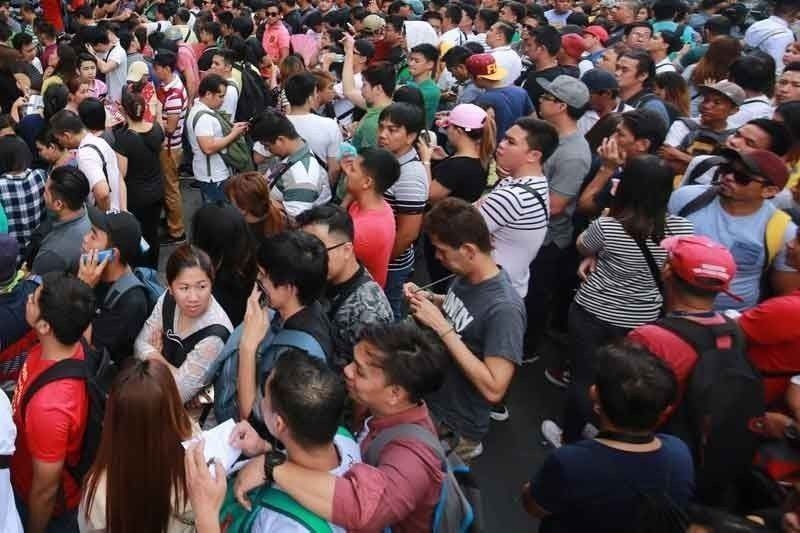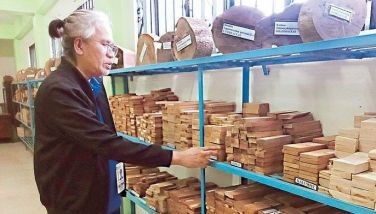Government forms national strategy to tackle unemployment

MANILA, Philippines — Faced with increasing numbers of unemployed workers, the government is working double time to provide jobs in a bid to boost an economy badly hit since last year by the COVID-19 pandemic.
A total of 420,000 workers lost their jobs in 2020, government statistics revealed.
Cabinet secretary Karlo Nograles said the government aims to provide about 2.4 million to 2.8 million jobs this year, and then between one million to 1.2 million jobs in 2022 to cut the rate of joblessness due to the pandemic.
“As backbone of our economic activities, it is incumbent upon us to ensure they get the support they will need to be able to recover,” Nograles said, referring to the unemployed sector.
Nograles said it is for this reason that key government agencies came together last Friday for the signing of the joint memorandum circular on the creation of the National Employment Recovery Strategy (NERS) Task Force.
“To the NERS Task Force, there is a lot of hard work ahead, but just thinking of the employment we will help create and keep, and the lives that we will help make better, is more than enough motivation to press on,” he added.
In his closing statement during the event spearheaded by the Department of Labor and Employment (DOLE), Nograles said NERS aims to focus on Trabaho, Negosyo and Kabuhayan initiatives to uplift the condition of the hard-hit labor sector due to the ongoing pandemic.
“Our workers are among the most important sectors of the economy. They produce our food, goods and essential products. They also provide the crucial and necessary services we need on a daily basis,” Nograles said.
He also underscored the role and contribution of the working class to the economy, citing figures from the Labor Force Survey of the Philippine Statistics Authority which showed 420,000 workers lost their jobs in 2020, resulting in a 10.2 percent unemployment rate last year.
Despite this, there were some opportunities that arose.
“We have also – due to the pandemic – saw every opportunity to improve on our existing technologies; and the NERS task force, I am sure, will also look out for improving the advantage of our workers through these available technologies in their action plan. Because of the pandemic, our workers had to adapt to the changing needs of employers and the industries they belong to,” he said.
Citing the Philippine Development Plan 2017-2022 launched by the National Economic and Development Authority (NEDA), Nograles noted how the agency factored in the pandemic in the increase of unemployment rate.
“The NEDA kept the seven to nine percent target for the unemployment rate for this and next year, although there has been a sustained improvement from 2017 to 2019 in employment. But due to COVID-19, we had been seeing an increase in our unemployment rate,” he said.
Nograles noted that while the government expects a gradual recovery by late this year until next year, there will be a substantial increase in the number of people seeking employment upon the graduation of the first batch of K-12 graduates.
Nograles said this will translate to “additional supply of workers next year that will also make our unemployment rate even higher.”
Government support
To help address the problem, Nograles said the government plans to step up support for training, education and opportunities with these technologies, which are among the important components of the NERS.
The DOLE, Department of Trade and Industry (DTI) and Technical Education and Skills Development Authority (TESDA) have begun coordinating on integrating their employment, livelihood and training programs to bolster the Philippine economy.
“Our National Employment Recovery Strategy or the NERS 2021-2023 will address access to jobs and livelihood programs, create retraining opportunities to improve employability and do refocusing of jobs to cope with the needs of the current pandemic,” Nograles said.
Jumpstarting the economy
The Fiscal Year 2021 national budget will be used to jumpstart the economy through, among others, an intensification of the administration’s Build, Build, Build program which will create 1.1 million direct and indirect jobs.
“The signatory and partner agencies are all in agreement that we need to support the Filipino worker during these challenging times with programs that are immediate in implementation and comprehensive in scope,” Nograles said.
“This is a shared, all-out effort which we’re also coordinating with the private sector because we want as wide a participation from stakeholders and policy makers as possible,” he added.
The DTI, DOLE, TESDA, Commission on Higher Education, Department of Agrarian Reform, Department of Agriculture, Department of Education, Department of Natural Resources, Department of Information and Communications Technology, Department of the Interior and Local Government, Department of Public Works and Highways, Department of Science and Technology, Department of Tourism, Department of Transportation, National Security Council and the Office of the Cabinet Secretary signed the joint memorandum.
- Latest
- Trending
































